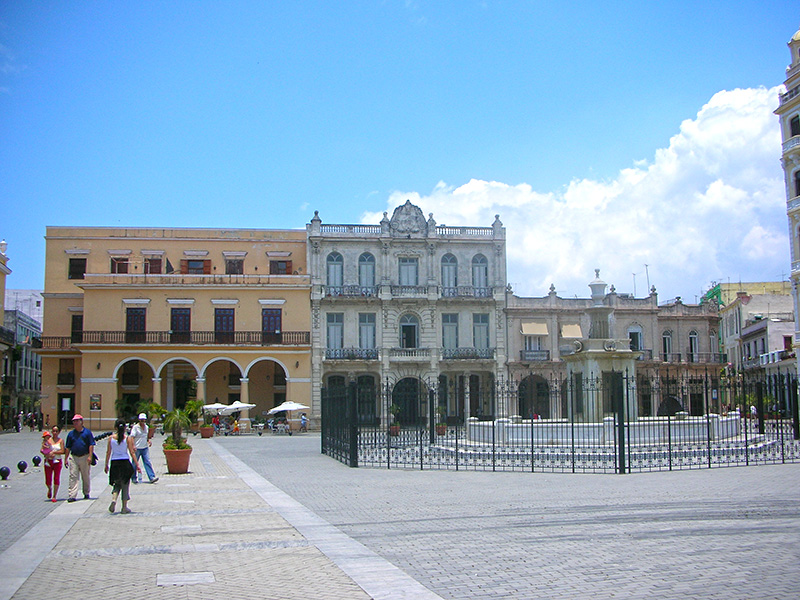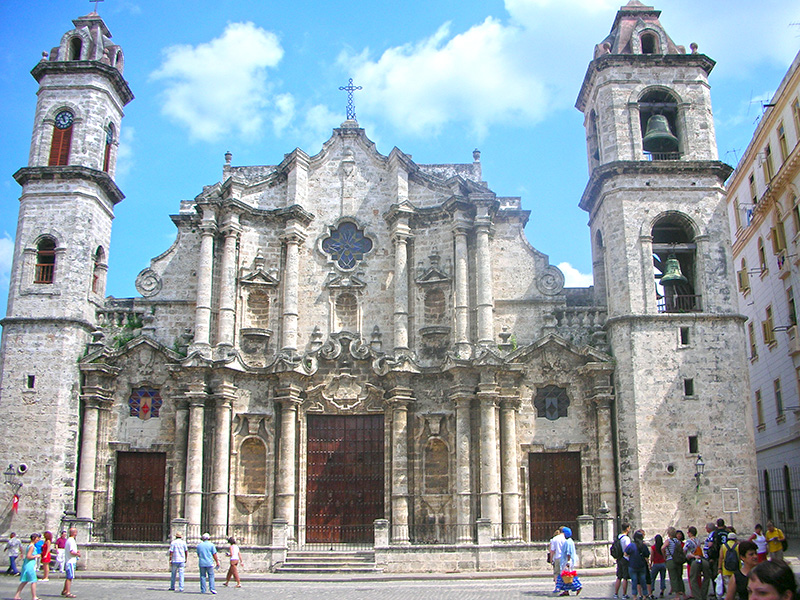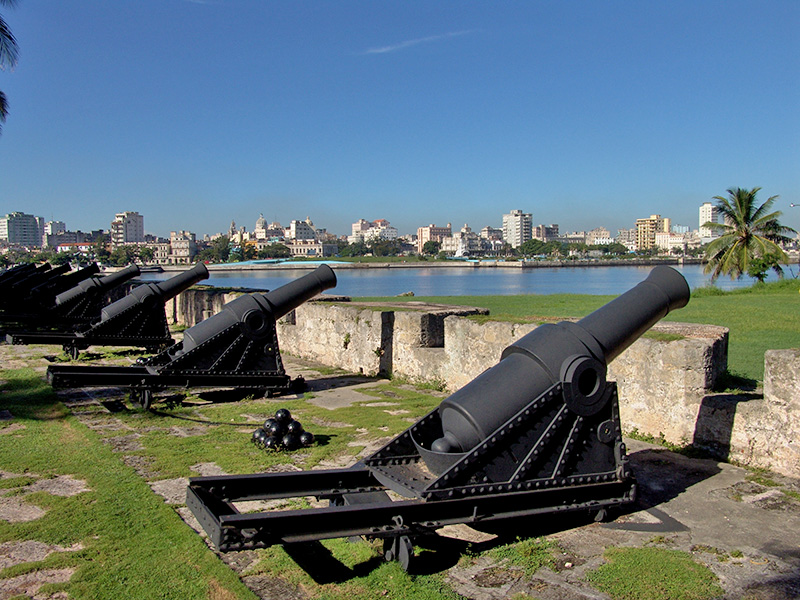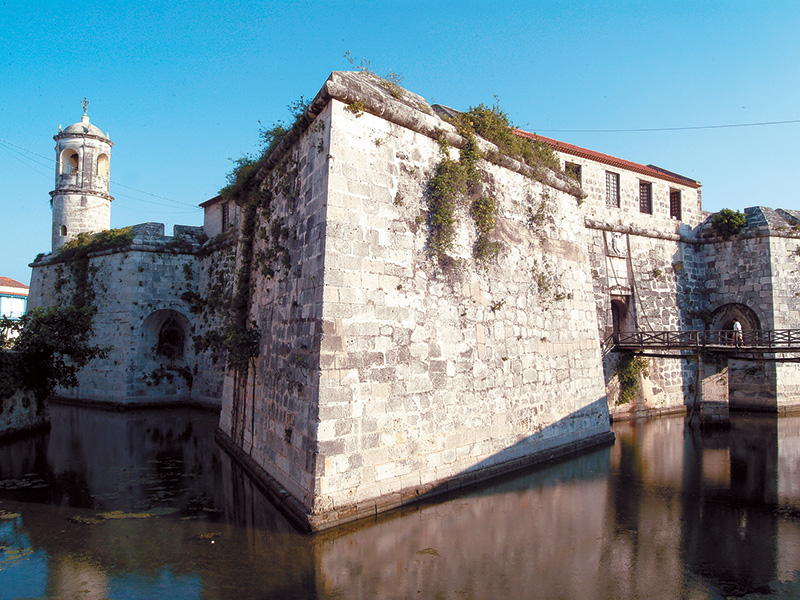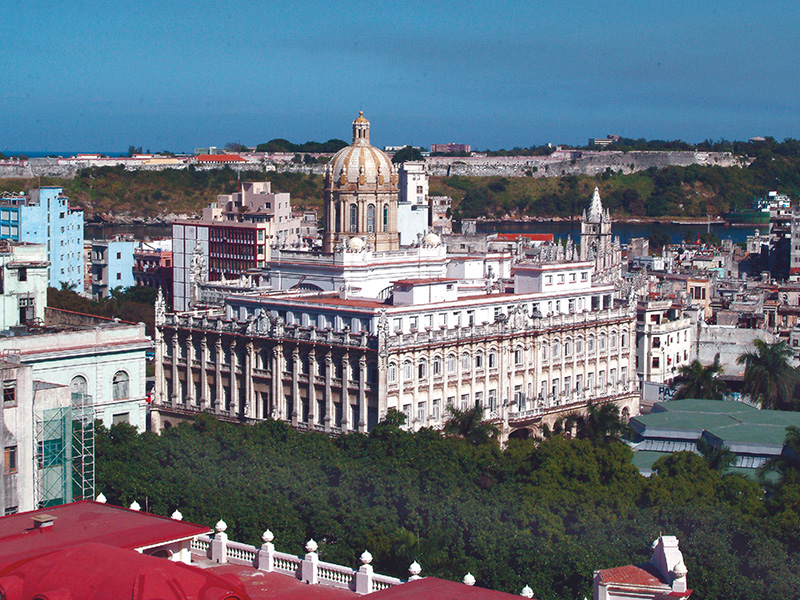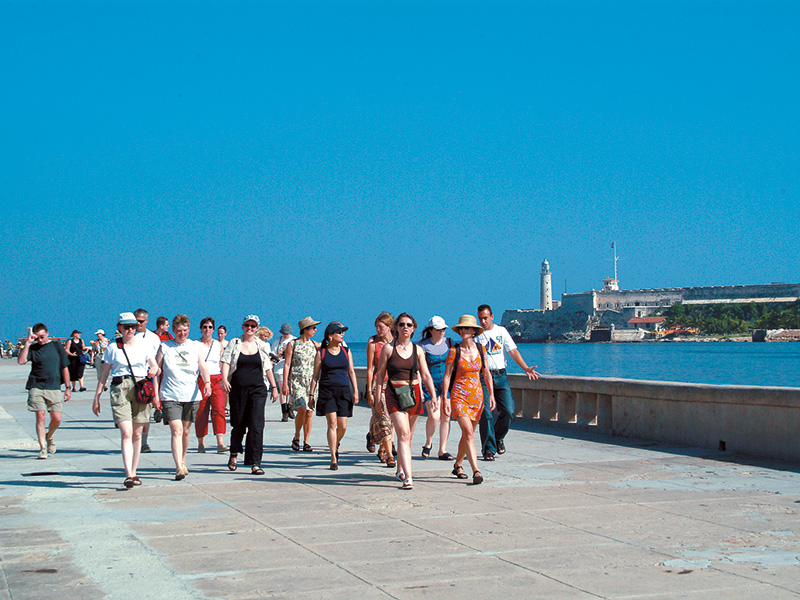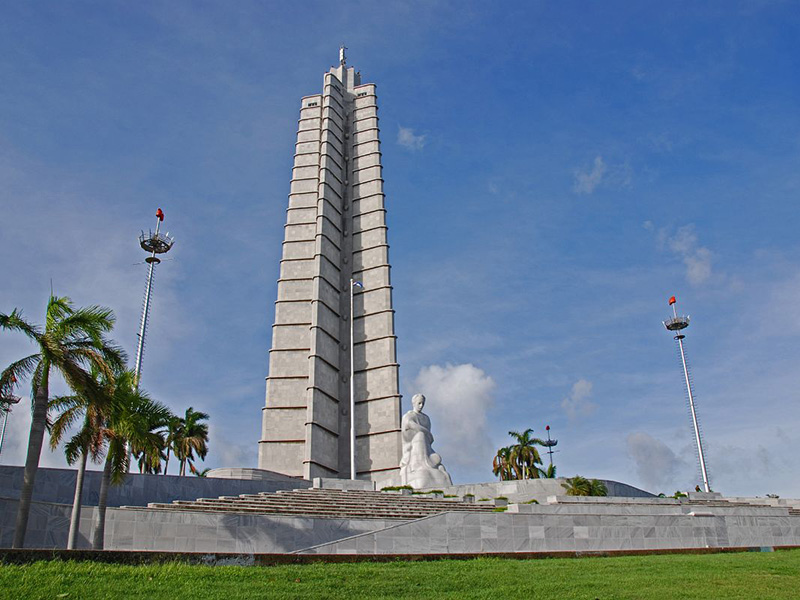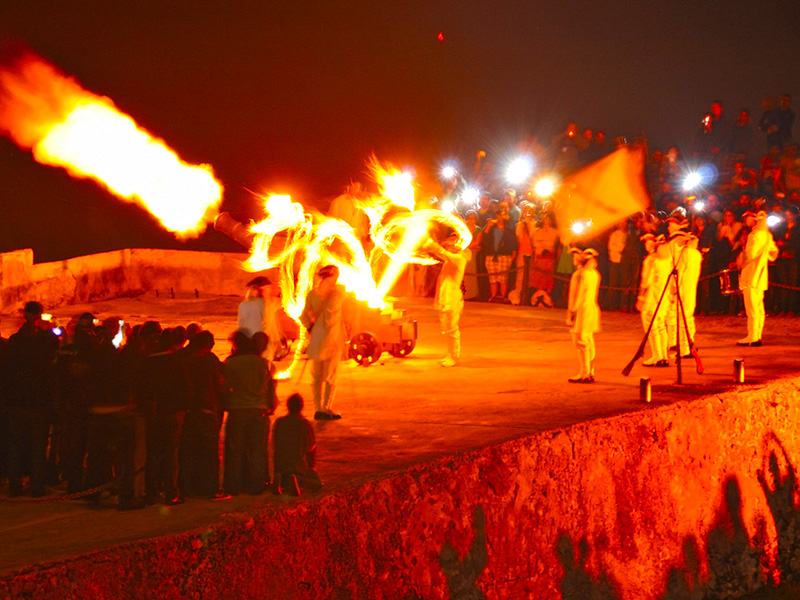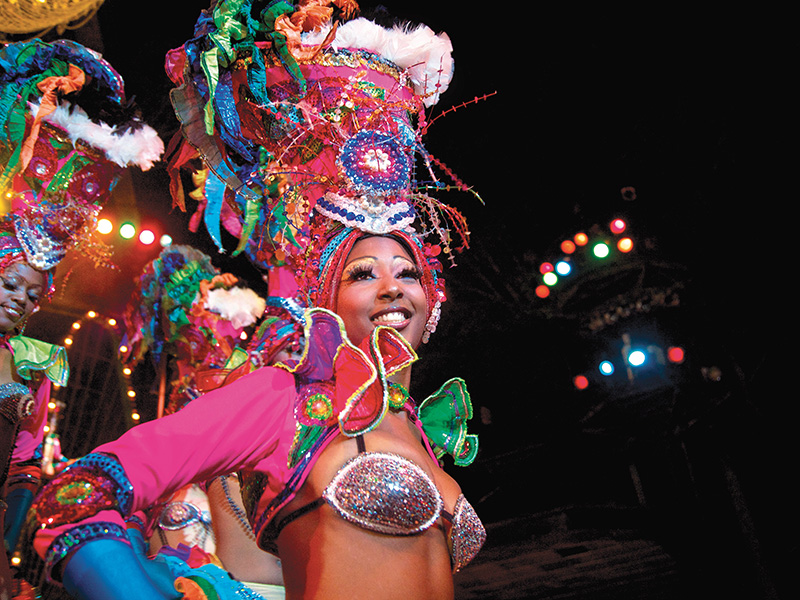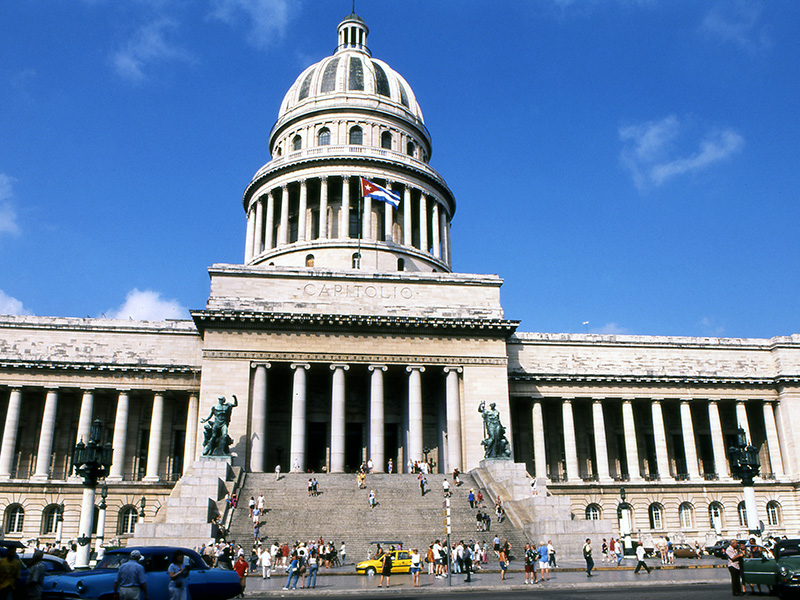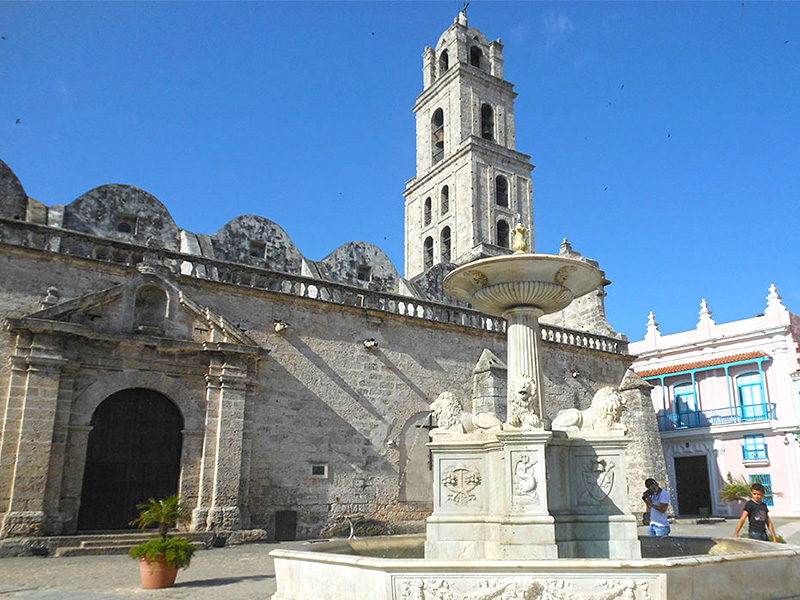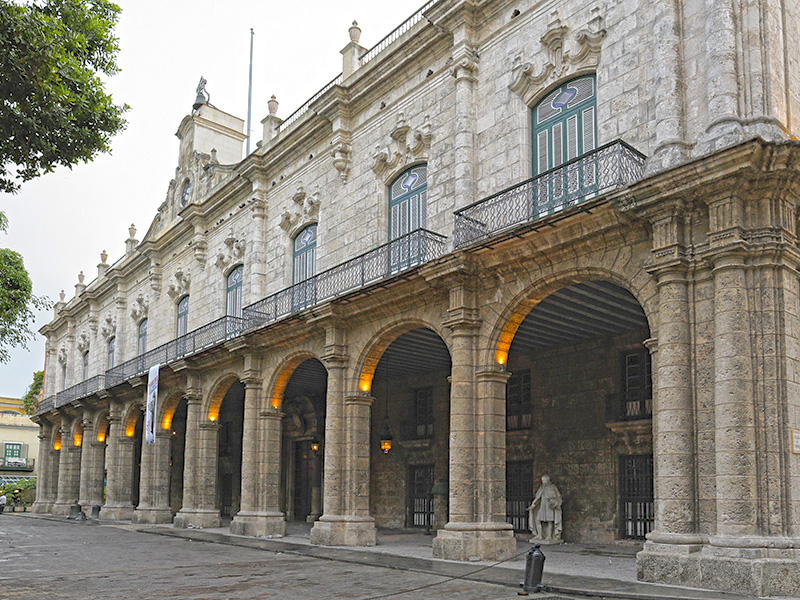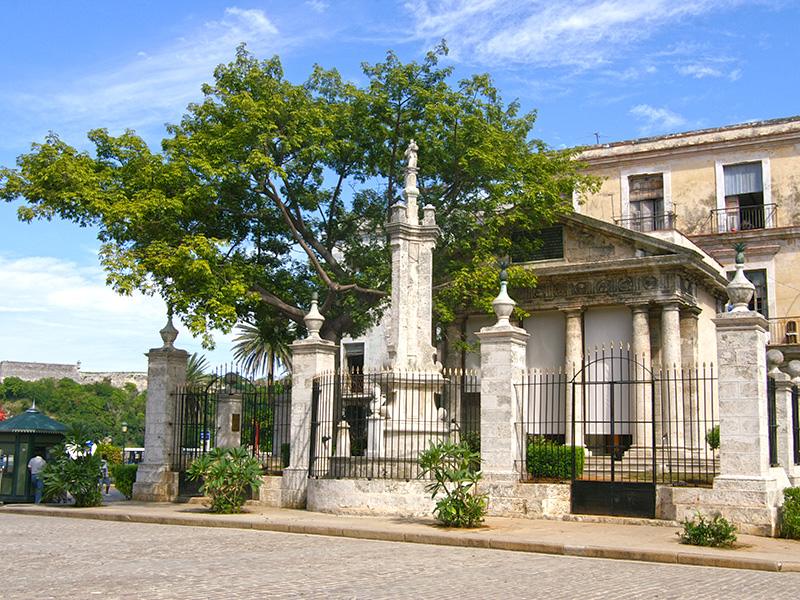Old Square
The most notorious aspect about this place are the buildings that surround it, because they have the unquestionable historical and artistic values of having fixed an architectural style that extended throughout the city and characterized the Cuban architecture of the 18th century.
Arms Square
The oldest and one of the most beautiful in Havana. It is the perfect starting point to explore Old Havana, surrounded by cafes, bars and restaurants. It forms the first space of the city, where around it the most representative buildings of the Cuban Baroque and the Spanish colony are grouped.
San Francisco de Asis Square
A place where there are buildings of remarkable value, the Convent and the Church of San Francisco de Asís. In this square, there are different shows and activities that demonstrate the value of cultural actions in public spaces and give a recreational option for residents and visitors, while contributing to revitalize the heritage and bring it closer to the new generations.
Cathedral Square
It integrates a set of elegant mansions of the aristocracy of the colonial era and is the maximum expression of the baroque period of colonial architecture. It has been the scene of various events of historical, political and social nature.
San Carlos de La Cabaña Fortress
The largest of the military installations built by Spain in America. It has a Weapons Museum and it is the venue for cultural and recreational activities, of which the traditional 9 o´clock gun cannon fire ceremony stands out, that night after night, can be appreciated by visitors.
Tres Reyes del Morro Castle
Fortress of great historical value and outstanding cultural tourist attraction, it is located on a cliff at the entrance to the port of Havana. Its construction began in 1589 and concluded in 1630, being a vital part in the defense of Havana against the siege of corsairs and pirates.
Real Fuerza Castle
Attractive place for its architectural, urban, cultural and social value. Located in the historic center of Havana and declared as World Heritage Site
by UNESCO. It constitutes the oldest fortress of the powerful fortified system of Havana. At the highest point of the solid fortification can be seen a replica of La Giraldilla, symbol of the City (the original of this small statue is preserved in the Museum of the City).
Museum of the Revolution
Located in the old Presidential Palace, it exhibits an extensive sample of objects of great historical significance, related to the national liberation feats. In its outer areas is the "Granma" Memorial, where the vessel used by Fidel Castro and more than eighty fighters is displayed, protected by an immense glass urn, which was used to return to Cuba from exile in Mexico and to restart the fight for the definitive independence of the country.
Malecón
The Malecón is the longest bench in the world and one of the favorite places for Havana citizens. The first projects for the construction of this magnificent avenue date back to the beginning of the 19th century. It borders along the coast of the city for 7 km and It extends from the entrance of the Bay of Havana (Castillo de La Punta) to the fortress of La Chorrera, near the mouth of the Almendares River.
José Martí Memorial
Located in the historical Revolution Square, in the center of Havana City, this place offers the visitor a sample of the life and work of the National Hero of the Republic of Cuba. The base of the monument presents four exhibition halls and one for events. The lookout, located on its obelisk over 138 m high, is the highest point of the city, and allows you to enjoy an unbeatable panoramic view of the Capital.
Nine o'clock Cannon Blast Ceremony
The ceremony of the traditional 9 o´clock gun cannon fire is one of the most deeply rooted and attractive traditions of Havana. In colonial times, at 4:30 in the morning and at 8:00 at night, shots were fired to warn the opening and closing of the doors of the wall that surrounded the city, and the placement and removal of the chain that closed the entrance channel of the port. But, even after having been knocked down, the custom of firing a cannon shot at 9:00 pm was kept, which is now valid for Havana citizens to check the time of their watches.
Tropicana Nightclub
With more than half a century of history, the famous Cuban cabaret is internationally known for the virtuosity of its dancers, the experience of its show directors, the quality of its artistic cast (made up of more than 200 professionals) and because the show area it is not a room or closed construction, but as its main slogan says "A paradise under the stars".
The most important artists of Cuban and North American music have passed through its stage, and among its most frequent clients have been famous artists, actors, businessmen and politicians. At present, artists from all over the world are invited there. The shows of this famous cabaret have toured the main cities of the Caribbean, Europe and America
National Capitol
It is one of the emblematic buildings of the Havana landscape. It has an area of 38,875 m² and since its inauguration, on May 20th, 1929, until 1959 it was the seat of the legislative body of the Republic. It is currently occupied by the Ministry of Science, Technology and Environment. Inside there is a bright that marks the zero kilometer of the Central Highway, and very close to it, right at the entrance of the majestic Hall of the Lost Steps is the Statue of the Republic, work of 17.54 m high, made by the Italian sculptor Angelo Zanelli, which houses the world's third largest indoor statue.
San Francisco de Asis Church and Convent
The Church and the Convent of San Francisco de Asís is the current scenario of the richest cultural traditions. According to the City Historian, "collecting, restoring, preserving and exhibiting are the classic principles that rule there ... to save the endangered heritage from the grievances of time". The construction of the current set dates from 1738, and replaced a more modest one completed in the year 1591. Since 1841 it was closed to the cult, and the building had the most diverse uses. After a restoration that returned its original values in the nineties, the architectural complex also houses a concert hall and the Holy, Sacred and Religious Art museums
Capitanes Generales Palace
It is currently the headquarters of the Havana City Historian´s Office. It was built in 1776 and has had different functions since then: Government House, Palace of the General Captains of the Island, Presidential Palace and Municipal Palace of Havana. The City Museum currently occupies part of the sumptuous halls that exhibit valuable treasures such as: the first Cuban flag, personal belongings of national heroes such as José Martí, Máximo Gómez and Antonio Maceo, together with a valuable collection of furniture, carriages and objects from the colonial era.
The Templete
Located in the Plaza de Armas, in front of the Castillo de la Real Fuerza, the Templete is a small neoclassical building built in the first half of the 19th century, right there where it is said it took place the first public mass and the first council of the rising Villa de San Cristóbal de La Habana. El Templete, as the monument was named, resembles a Doric temple and conserves three valuable mural paintings by the French painter Juan Bautista Vermey. On one of its walls, it was placed the plaque that validates the condition of World Heritage of the historic center of the City.
